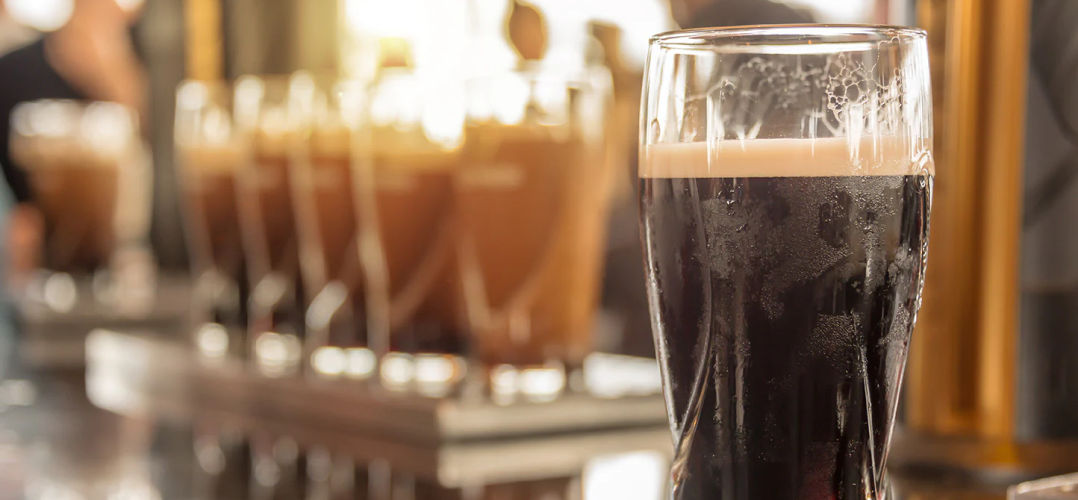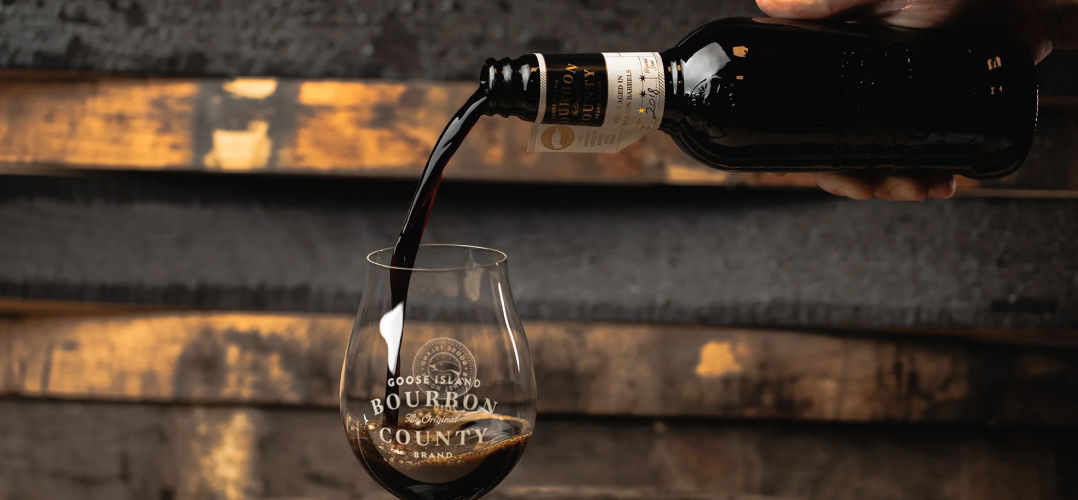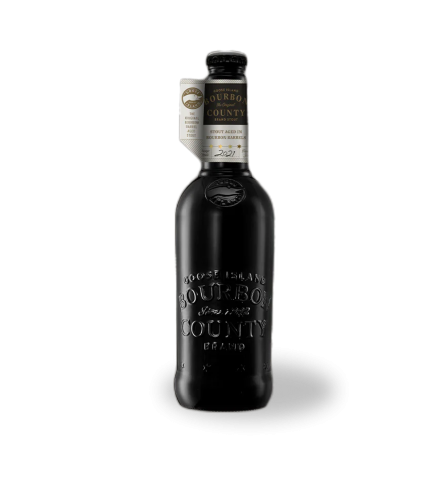
Words by Jonny Tyson
An obscure British missionary left what is now Wales in the 5th Century CE to return to the land that had previously enslaved him. He used the shamrock to explain the Trinity and convert the locals to Christianity.
The land was, of course, Ireland and the missionary was St. Patrick. He is celebrated around the world by anyone who claims Irish ancestry, anyone who feels Irish or by just about anyone who likes a party! The beer style that toasts this icon the most is stout, a dark beer found throughout the world, but brewed in Ireland, mostly driven by the success of one brand: Guinness.
Stout may have become the liquid symbol of Ireland, but its origins were on the other side of the Irish Sea in London. Stout beer emerged from the classic London beer, Porter, and that’s where we pick up the story. Porter descended from a dark beer known as London Brown Beer, but was drier and more heavily hopped. It was the first dark beer that was brewed for the masses by the burgeoning brewers of London and drove their growth. Stout was the name given to stronger dark beers, so a stout porter was a stronger (in terms of alcohol) version of a porter. In the 18th and 19th Centuries, you might expect a standard porter to be around 5% to 6% ABV and a Stout (usually referred to as a Brown Stout) was often around 7% to 8% ABV.
Goose island’s Mike Siegel, Wimbledon Brewery’s Derek Prentice and beer historian Ron Pattinson recreated a 19th Century porter with the amazing Obidiah Poundage Porter. This was a rare chance to taste a piece of London history, with a dark beer made from a blend of vat-aged and fresh porter, recreating historic malts in the grist.
Moving over to Ireland, Arthur Guinness seems likely to have started brewing the popular London style of porter in the late 1770s, after brewing mild and other ales since their founding in 1759. They didn’t use the term ‘stout’ until the 1840s and had by then become a significant brewer.

The evolution of modern Irish Stout is in part down to a change in the recipe sometime in the 1920s, when heavily roasted un-malted barley was used instead of brown and black malt, and this gives Irish-style stouts their dry roasty finish. Stout beers, like all other beers in Britain and Ireland, fell in gravity over the First World War and into the Second, so those strong versions of porter all evolved into dark beers under 5%, and that’s where we seem to have stayed.
Stout for the summer?
Why has stout endured, and why does it seem to be brewed in hotter parts of the world, like the Caribbean, West Africa and Sri Lanka? These aren’t new boys on the block, but venerable breweries that long predate the craft beer movement. In the UK, dark beers get side-lined in the summer for paler and fizzier brews, but many who live in warmer climes may beg to differ. It can be surprisingly refreshing, and don’t be fooled by the colour: many stout beers are lighter-bodied than you might think. It’s a versatile dark beer and comes in variety of styles and strengths, as well as a myriad of flavoured versions!
The Stout Beer family:
London Porter – A modern evolution of historic porter. Pale, brown and black malt make a balanced beer with roasted notes, cocoa bean flavours and toast.
Export India Porter – A well-hopped version of London Porter that was prepared for export to India in the 19th Century. Destined for the rank-and-file troops.
American Porter – A stronger version of London Porter that is well-hopped, with American varieties that showcase citrus and pine resin notes.
Milk/Cream Stout – A stout beer developed in the early 20th Century that uses lactose in the brew. Lactose is a sugar that brewer’s yeast can’t ferment, so gives the beer a creamy sweetness. Originally marketed as a nourishing supplement.
Goose Island Golden Goo-Beer-Lee Creme Stout - A fun twist on this style in celebration of Cadbury’s Creme Egg’s 50th Birthday.
Oatmeal Stout – A stout developed in Scotland in the 1920s. 20% to 30% added oatmeal gives this dark beer a rounded texture and softer finish. Originally marketed as a heathy, nourishing beer.
Irish Stout – The beer that evolved out of London Porter. The recipe evolved in the 1920s to leave out brown malt and add heavily roasted, un-malted barley, giving a characteristic dry roasty finish.
Foreign/Extra Stout – An amped up version of Irish Stout that has more alcohol and some hints of residual treacle-like sweetness. Originally exported to the colonies, it’s the style that is favoured in West Africa and the Caribbean.
American Stout - A modern version of a foreign-style stout, with the trademark aromas of American hops and a punchier roastiness.
Imperial Stout – The Classic high-strength British stout beer that was brewed for export to the Russian Empire in the 19th Century. Often brewed with more than 10% ABV, layered flavours form a complex malt bill of coffee, molasses, roast, liquorice and chocolate. Now a craft brewery favourite that is the base style for barrel-aged and specialty versions.
Specialty Stouts:
Barrel-Aged Stout – An Imperial stout that has been aged in a barrel previously used to mature a spirit or wine. Goose Island’s Bourbon County Stout was the trailblazing brew that pioneered this style almost 30 years ago.

Breakfast Stout – A style of stout with key elements of breakfast as the flavours. Coffee beans, lactose and oatmeal are usually found to make a creamy, rich stout with notes of espresso
Pastry Stout - A catch-all style for all those sweet-flavoured stouts that may use vanilla, cocoa, baking spices, nuts, caramel, maple syrup and just about anything else you might put in a rich dessert!
Stouts may be associated with Ireland - and you’re absolutely right to raise a glass or two of ‘the black stuff’ in honour of St Patrick this March - but stouts and porters offer so much more than just an annual session beer. They can be dry or sweet, weak or strong and flavours range from espresso beans and toast to rich dried fruit, dark caramel and chocolate. Stouts are truly an international beer, with its origins in London, sold to the world by the Irish and loved everywhere from Jamaica to Nigeria and the Far East. The stout family has had a new lease of life, with a myriad of interpretations around the globe from newer craft breweries, so if you haven’t tried one yet, what are you so afraid of? The dark isn’t always scary!
